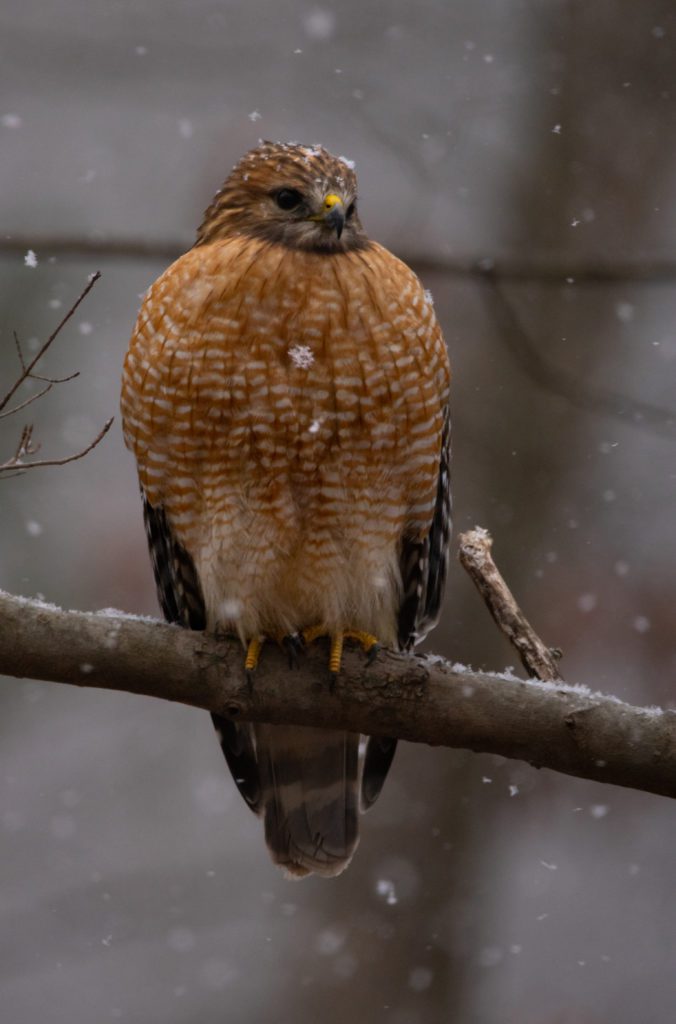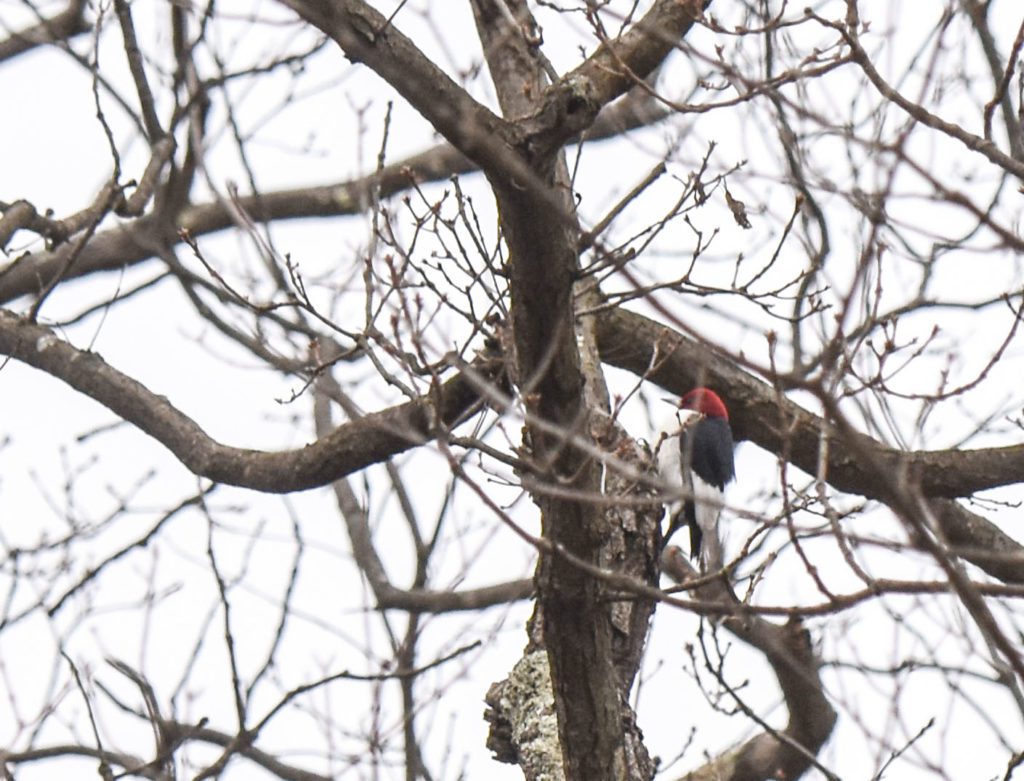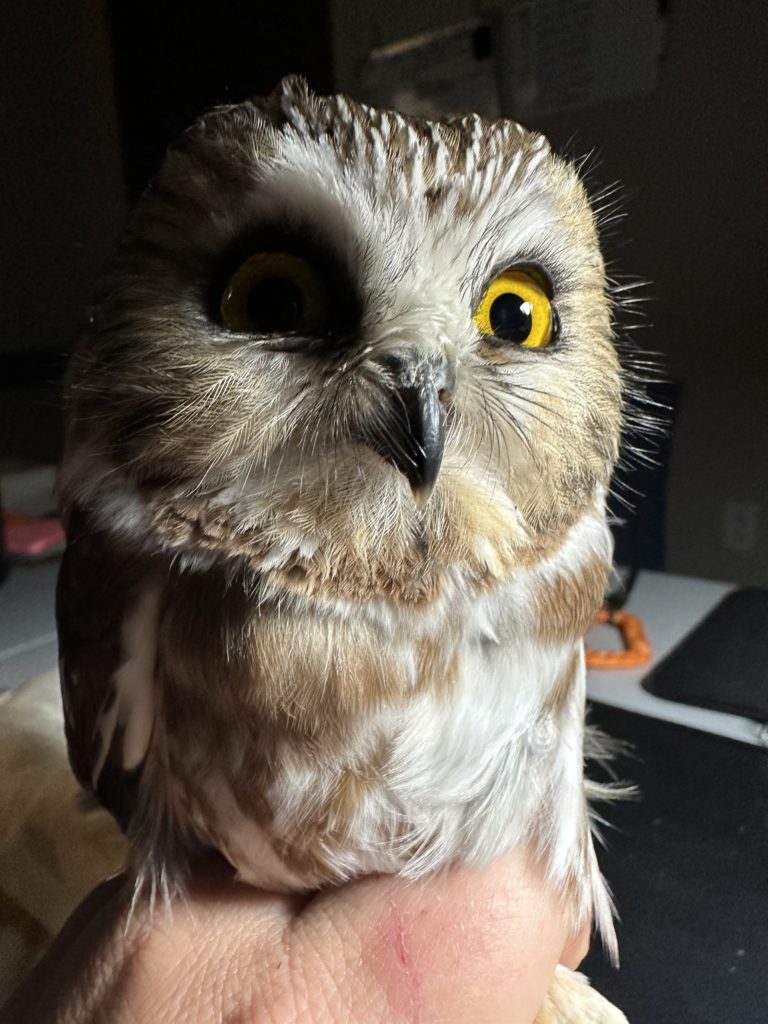by Annie Lindsay

On the morning of December 17, 2022, 41 birders assembled at Powdermill Avian Research Center to receive the maps and datasheets for the sectors they’d be visiting for the annual Rector Christmas Bird Count (CBC). During the CBC, participants identify and tally every bird they see or hear within a pre-established 15-mile-diameter circle on a selected day between December 14 and January 5. The Rector count was established in 1974, but the history of the CBC extends back to 1900, when a small group listed birds in 25 count circles on Christmas Day. Now sponsored by the National Audubon Society, the CBC has expanded to include nearly 3,000 circles throughout the Western Hemisphere. The CBC welcomes birders of all skill levels and is one of the largest and longest-term community science projects.
The Rector count’s center point is just northwest of Powdermill Nature Reserve, and encompasses a variety of habitats including the ridge-top forests of Chestnut Ridge, Laurel Summit State Park, Laurel Mountain State Park, and Forbes State Forest, the mountain stream valleys and hillsides of Linn Run State Park and Powdermill Nature Reserve, two lakes that often attract migrating or overwintering waterfowl, and rolling farmland interspersed with small towns. This habitat variety means that species diversity can be quite high, and since 1974, birders have tallied 131 species in the Rector circle.
Last year, warm weather extended far into the fall, and the Rector count recorded high totals of many species that we would normally expect to spend the winter a bit further south. This year, however, the fall weather was more typical of southwestern Pennsylvania, and temperatures on the day of the count hovered around freezing as large, fluffy snowflakes fell throughout the morning. The day began early as a few ambitious birders searched for owls before dawn, finding eight Eastern Screech Owls. By dawn, all participants headed to their sectors to count diurnal birds, while an additional eight birders counted what they saw and heard in their yards and visiting their feeders. As dusk fell, CBC participants met at Powdermill for a tally dinner, an evening of camaraderie and sharing stories from the day. Although the species total was only 59, which is slightly below average, individual numbers for each of these species were typical. A few, including Wild Turkey, Bald Eagle, Red-shouldered Hawk, Winter Wren, and Eastern Bluebird even saw new high-count records.

For the fifth year in a row, participants found Red-headed Woodpeckers during the count. This species is difficult to find in southwestern Pennsylvania, and the Rector count circle is one of the only reliable places to encounter them. A favorite of birders, this bold, color-block-patterned woodpecker always delights those lucky enough to spot one.

One of the most exciting sightings of this year’s count, and the last bird encountered for the day, was a Northern Saw-whet Owl spotted near Powdermill’s nature center just as the tally dinner ended. Northern Saw-whet Owls are found in southwestern Pennsylvania primarily during fall migration, but some overwinter here, and there is evidence that a few pairs may breed locally. Saw-whets are small and do not vocalize as readily as most of the other owls, which make them difficult to find. This fall, Powdermill’s ornithologists caught and banded 99 of these tiny owls, nearly a high fall record! As the 2022 Christmas Bird Count season wraps up, we’re already looking forward to 2023. Thank you to all participants for spending the day searching every corner of the count circle looking for birds, and to all landowners for granting participants access to their properties for a much more thorough and complete count.
Related Content
2021 Rector Christmas Bird Count Results
Milestones at Powdermill’s Banding Lab
Holiday Stowaway: Northern Saw-whet Owl
Carnegie Museum of Natural History Blog Citation Information
Blog author: Lindsay, AnniePublication date: January 6, 2023
